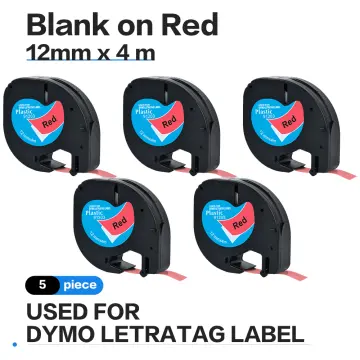The letra tag is a lesser-known HTML element that can be quite useful in certain situations. In this article, we will explore what the letra tag is, how it can be used, and some best practices for implementing it in your projects. Whether you’re a seasoned web developer or just starting out, this guide will provide you with all the information you need to know about the letra tag.
Understanding the letra tag

The letra tag is an HTML element that is used to define text as being a letter or character within a larger body of text. This can be particularly useful when you want to highlight or emphasize individual letters within a word or sentence. The letra tag is not widely supported by all browsers, so it’s essential to consider compatibility issues when using it in your projects.
Syntax of the Letra Tag
The syntax for the letra tag is straightforward. It consists of an opening tag followed by the letter you want to define and then a closing tag . Here’s an example of how the letra tag is used:
The H in HTML stands for Hypertext Markup Language.In this example, the letter “H” is enclosed within the letra tags, indicating that it is the focus of attention within the sentence.
Best Practices for Using the Letra Tag
When using the letra tag in your HTML documents, there are a few best practices to keep in mind. Firstly, it’s essential to remember that not all browsers support the letra tag, so it should be used sparingly and only for decorative or stylistic purposes. Additionally, avoid using the letra tag for critical content as it may not be accessible to all users.
Advantages of Using the Letra Tag

While the letra tag may not be as commonly used as other HTML elements, it does offer some advantages in specific scenarios. Let’s take a look at why you might consider using the letra tag in your projects.
Improved Typography
By using the letra tag to highlight individual letters within a word or sentence, you can enhance the typography of your text. This can make your content more visually appealing and engaging for users.
Creative Design Possibilities
The letra tag opens up creative design possibilities by allowing you to customize how individual letters are displayed on the page. You can experiment with different fonts, sizes, colors, and styles to create unique text effects.
Accessibility and SEO
While the letra tag may not be fully accessible to all users, it can still be beneficial from an SEO perspective. By using the letra tag strategically, you can draw attention to specific keywords or phrases within your content, potentially improving your search engine rankings.
| Pros | Cons |
|---|---|
| Enhanced typography | Limited browser support |
| Creative design options | Accessibility concerns |
| SEO benefits | Overuse can detract from readability |
How to Use the Letra Tag in Your Projects

Now that you understand the basics of the letra tag and its advantages, let’s explore how you can effectively incorporate it into your web development projects.
Adding Emphasis to Text
One common use case for the letra tag is to add emphasis to specific letters within a word or phrase. This can help draw attention to key points in your content and make it more visually engaging for readers.
Creating Decorative Effects
Another way to use the letra tag is to create decorative effects within your text. By styling individual letters differently, you can achieve unique design elements that set your content apart from the rest.
Enhancing User Experience
When used thoughtfully, the letra tag can enhance the overall user experience of your website. By highlighting important letters or words, you can guide users’ attention and make your content more scannable and digestible.
Common Mistakes to Avoid with the Letra Tag
While the letra tag can be a valuable tool for web developers, there are some common mistakes to avoid when using it in your projects. Let’s take a look at a few pitfalls to watch out for.
Overusing the Letra Tag
One of the most significant mistakes you can make with the letra tag is overusing it in your content. Using the tag excessively can clutter your text and detract from its readability, ultimately harming the user experience.
Ignoring Browser Compatibility
As mentioned earlier, not all browsers fully support the letra tag. Ignoring browser compatibility issues can lead to inconsistent rendering of your content across different platforms, so it’s crucial to test your pages thoroughly.
Sacrificing Accessibility for Design
While the letra tag can help you create visually appealing text effects, it’s essential not to sacrifice accessibility for the sake of design. Ensure that your content remains accessible to all users, including those using assistive technologies.
Implementing the Letra Tag Responsibly
To make the most of the letra tag in your projects, it’s essential to implement it responsibly and thoughtfully. By following these best practices, you can ensure that your content remains accessible, engaging, and visually appealing to all users.
Test Across Multiple Browsers
Before deploying pages that use the letra tag, be sure to test them across multiple browsers and devices. This will help you identify any compatibility issues early on and make necessary adjustments.
Provide Alternative Text
To ensure that your content remains accessible to all users, consider providing alternative text for any content enclosed within letra tags. This will help users who may not be able to see the styled text understand its context.
Use the Letra Tag Sparingly
While the letra tag can be a powerful tool for enhancing your text, it’s essential to use it sparingly. Reserve its use for situations where it adds genuine value to your content and avoid overusing it for purely decorative purposes.
Conclusion
In conclusion, the letra tag is a versatile HTML element that can add flair and creativity to your web development projects. By understanding how to use the letra tag effectively and responsibly, you can enhance the typography, design, and user experience of your websites. Remember to test your pages thoroughly, provide alternative text for accessibility, and use the letra tag judiciously to make the most of this unique HTML element.